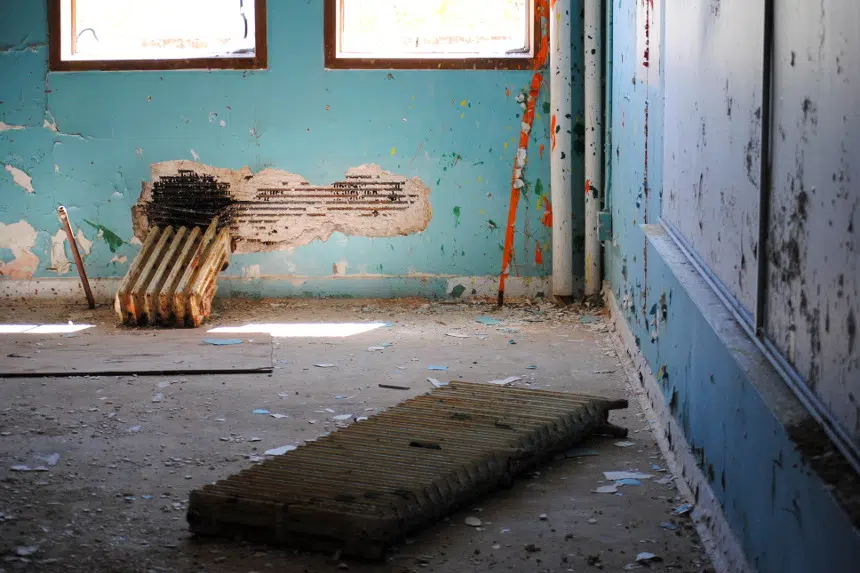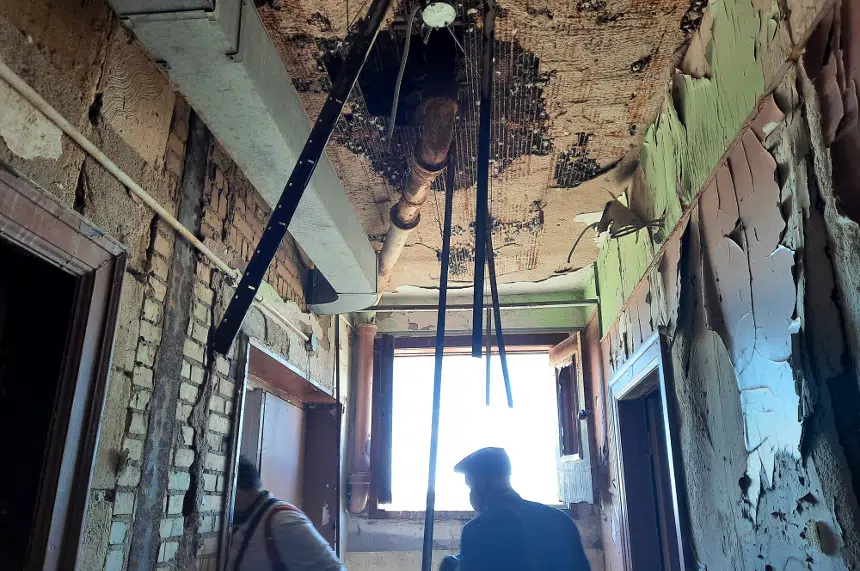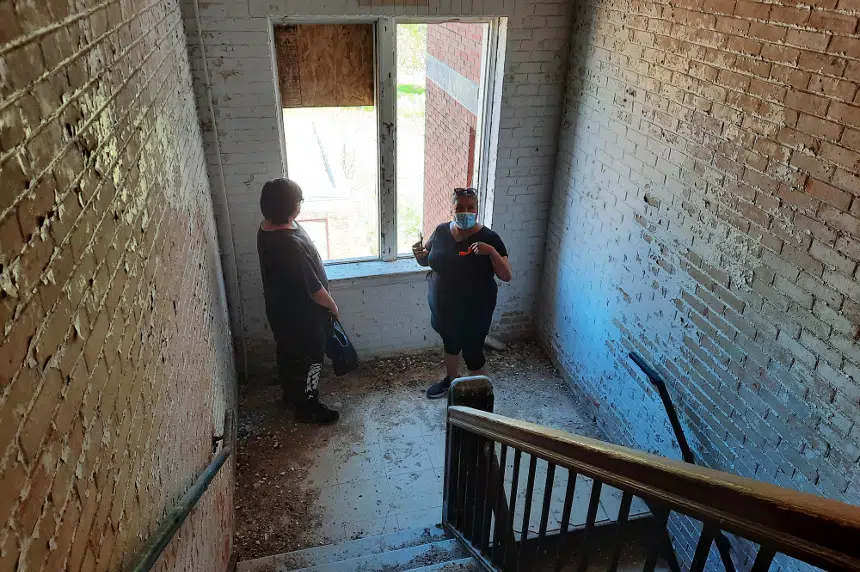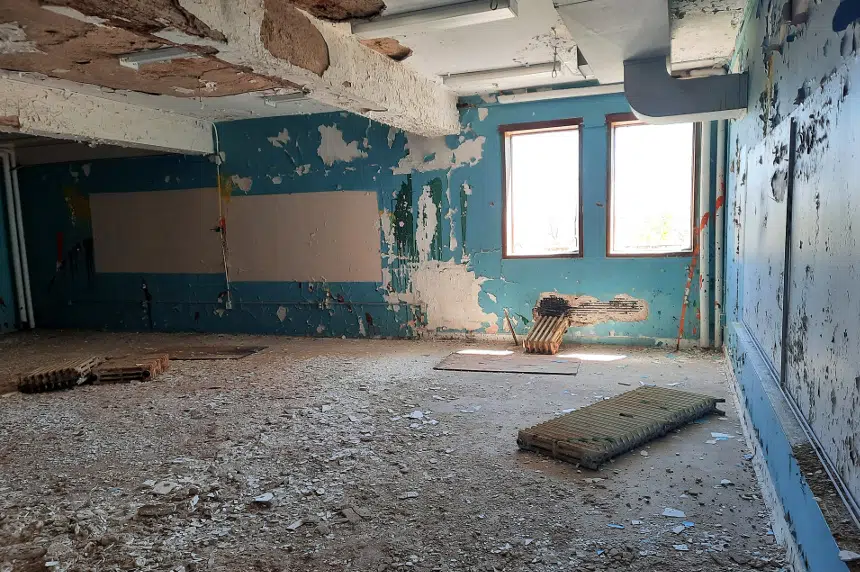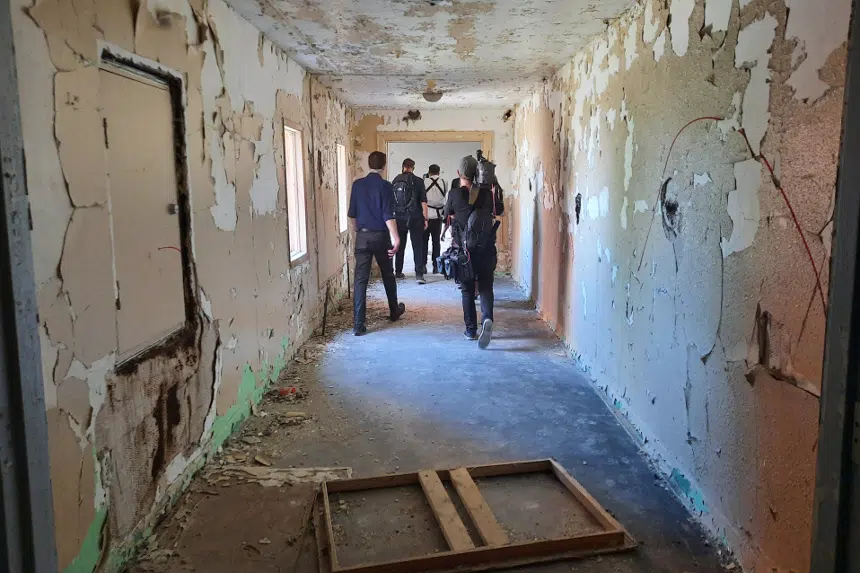Just off Highway 15 on the Muskowekwan First Nation, hidden from the road by trees, stands a relic of pain and hurt for many in the community.
It’s the last fully intact residential school building in Saskatchewan.
It has been 90 years since the building was put up and fewer than 30 since it was last open, but it still strikes an imposing brick figure on the prairie landscape – the inside, however, much less so.
Holly Geddes is currently a councillor for the Muskowekwan First Nation but before that, she was a student at the school for 10 years, beginning when she was five.
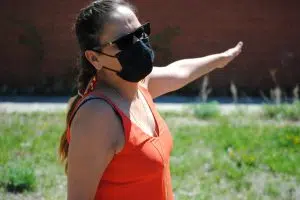 “I’ll tell you, it was lonely. But at the same time, when you’re in residential school with the same group of kids for 10 years, those become your sisters and brothers,” said Geddes.
“I’ll tell you, it was lonely. But at the same time, when you’re in residential school with the same group of kids for 10 years, those become your sisters and brothers,” said Geddes.
Geddes showed media around the old school after a vigil for children whose graves were found at a B.C. residential school last week.
Most of the windows were boarded up so many of the hallways, dormitories and small rooms had to be navigated with cellphone flashlights. The floors were covered with dirt, rocks and bird droppings.
Wires and metal jutted down from where the ceiling would once have been and curls of crisp paint were unavoidable, crackling as they were brushed up against and walked on.
Geddes pointed to the stairwells which she cleaned with a toothbrush as punishment, to the “boss’” office where you’d get the strap, and to the dormitories – moving higher up in the school as you got older.
“When we’d get scared, as six-year-olds do, we’d sleep together, we’d have a partner … We always had a partner growing up in residential … At our little tiny age, we knew to depend on somebody else to help us when we were scared or we didn’t know what to do,” remembered Geddes.
There were two areas in the school where Geddes said she wouldn’t go. One was the senior boys’ dormitory, because she remembered a Grade 10 boy taking his own life in the showers there when she was in her first years there.
“I remember that night, it was the scariest night in my 10 years in residential school … and I remember being so scared the whole night. The whole school was scared,” Geddes said.
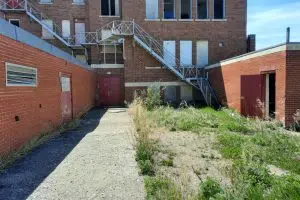
The small patch of land directly behind the former residential school on the Muskowekwan First Nation is where 35 unmarked graves were discovered in 2018. (Lisa Schick/980 CJME)
The other was the hallway leading to the boiler room in the bottom floor; Geddes called it the haunted hallway. She explained that it’s located near where 35 unmarked graves were found in 2018.
The graves had been found in a small plot of ground directly behind the school, leading right up to the building.
That was the only area checked with ground-penetrating radar at that time. But outside, Geddes swept her arm out to the fields behind the school and said it’s believed there are more unmarked graves there. A project is ongoing to search those areas as well.
Standing in the chapel in the upper floors of the building, Geddes acknowledged that her experiences were very different from those of her grandmother, who attended the same school in the 1920s.
“She said when she was in school, there was food with maggots given to them. If they didn’t eat that maggot-ridden food, they’re not going to eat,” said Geddes. “You had to work in the barn eight hours in order to get a meal … It was tough for the old people – lots of sexual assault, lots of physical abuse.”
Geddes said at the time, she didn’t believe the stories her grandmother told her: “You know, you hear the atrocities your grandparents tell you and you don’t want to believe it.”
With the chirping of birds coming from the ceiling behind her, Geddes said she and her people don’t hold their experiences against anyone.
“It’s not about holding anger and holding judgment, it’s about learning the truth of the land and moving on together as a nation – not only Indigenous people,” she said. “All our people, all the people that come to this land are welcomed from our grandparents.”
However, Geddes said the government needs to be accountable and acknowledge what it did to people in those schools.
“That’s all we want: The truth,” she said. “Let’s learn and let’s heal from the truth.”
The Muskowekwan community had the opportunity to tear down the school years ago but the majority decided against it. They want to turn it into a museum, but a lot of help and work will be needed before that can happen.
